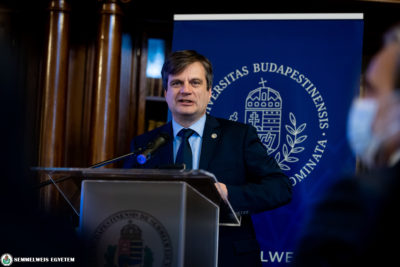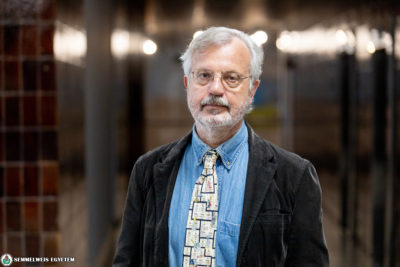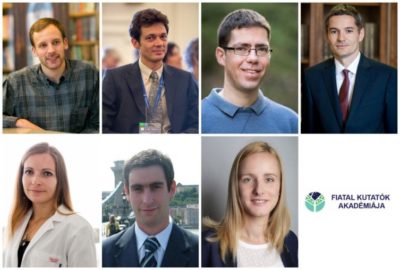The Highly Cited Researchers’ names are drawn from the publications that rank in the top 1% by citations for field and publication year in the Web of Science citation index, and the list identifies the research institutions and countries where they are based. If researchers demonstrated significant influence in their chosen field or fields through the publication of multiple highly cited papers during the last decade, the articles get qualified as “Highly Cited”. In the field of science the number of citation can be used to measure scientific impact.
Researchers are selected for their exceptional performance in one or more of 21 fields or across several scientific disciplines. For the 2021 Highly Cited Researchers analysis, the papers surveyed were the most recent papers available – those published and cited during 2010-2020 and which then ranked in the top 1% by citations for their ESI field and year (the definition of a highly cited paper). The more researchers there are in a given field the more citations are needed to earn a place in the list.
 The latest Highly Cited Researchers list of 2021 features three Hungarian scientists, two of them come from Semmelweis University. Dr. Péter Ferdinandy (Vice Rector for Science and Innovations, director of the Department of Pharmacology and Pharmacotherapy) is listed in the category “cross-field” based on his substantial influence across several fields for the fourth time after 2014,2017 and 2020.
The latest Highly Cited Researchers list of 2021 features three Hungarian scientists, two of them come from Semmelweis University. Dr. Péter Ferdinandy (Vice Rector for Science and Innovations, director of the Department of Pharmacology and Pharmacotherapy) is listed in the category “cross-field” based on his substantial influence across several fields for the fourth time after 2014,2017 and 2020.
“We need permanent progress and continuous publications within our field of expertise to be featured in a prestigious list like this”, said Vice Rector dr. Ferdinandy.
He also added that original publications and summaries are also of utmost importance. Although summaries are cited more often, the only way for scientists to reach high citation rate is to continuously publish their own observations as well. This way they may enhance their credibility within the scientific community. Dr. Péter Ferdinandy also highlighted the importance of the comorbidity model within his area of expertise, as this can help developing new therapeutic methods. During the development of new medicine and therapies we should also consider the interaction of risk factors and different comorbidities. The use of comorbidity models is crucial in cardioprotective drug development, as comorbidities may influence the heart’s molecular network.
I am incredibly proud that I achieved most of my research results here in Hungary. These results are the product of our long-term efforts and work in our laboratories.
– added dr. Ferdinandy.
Dr. Á rpád Szállási (associate professor of the 1st Department of Pathology and Experimental Cancer Research) has been listed due to his highly cited publications in the field of pharmacology and toxicology. He has been working at Semmelweis University since 2018. Previously he worked at the American National Cancer Institute and the Swedish Karolinska Institute. He has also worked in the field of drug development and was a practitioner in the United States. His most highly cited publications were published in the field of neuropharmacology.
rpád Szállási (associate professor of the 1st Department of Pathology and Experimental Cancer Research) has been listed due to his highly cited publications in the field of pharmacology and toxicology. He has been working at Semmelweis University since 2018. Previously he worked at the American National Cancer Institute and the Swedish Karolinska Institute. He has also worked in the field of drug development and was a practitioner in the United States. His most highly cited publications were published in the field of neuropharmacology.
“I have been doing research related to resiniferatoxin, which acts as an ultrapotent analog of capsaicin. In 1990, with the help of resiniferatoxin we were able to prove that the capsaicin receptor is present in sensory nerves responsible for pain perception. This receptor was later successfully cloned by David Julius. This discovery earned him a Nobel-prize in medicine. Several pharmaceutical factories consider the TRPV1 antagonist drugs as a potential for treating various diseases”, said dr. Árpád Szállási.
Semmelweis University expects from its researchers to publish highly cited articles in the most influential journals. In order to achieve this, the university provides scientific background and support. Dr. Ferdinandy also mentioned that currently a new system supporting research, development and innovation is being developed. The goal of the new system is to alleviate the administrative burden of researchers, so that they can fully concentrate on scientific work. Furthermore, the new system aims to organize lectures and events aiming to support university staff to develop the best publication strategy. The first lecture of the new event series “Science and Business Salon” was opened by Dr. Péter Gloviczki, who held a lecture about successful, high impact scientific papers.
“High-quality professional work is only the first step towards success. Communication among scientists is essential to distribute the findings of new publications to as many professionals as possible”, said dr. Ferdinandy.
The vice-rector also highlighted the key role of international communities, professional conferences and social media.
The third Hungarian researcher on the “Highly Cited Researchers” list is dr. Attila Szolnoki (Institute of Technical Physics and Materials Science) In 2021, only 6,600 – about 0,1% – of the world’s researchers have earned the exclusive distinction to be featured in the Highly Cited Researchers List, which is based on the multidisciplinary, international scientific database of Web of Science.
Ádám Szabó
Photo: Attila Kovács – Semmelweis University (the featured image is an illustration)
Translation: Norbert Lukács


